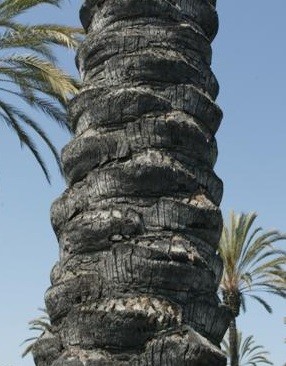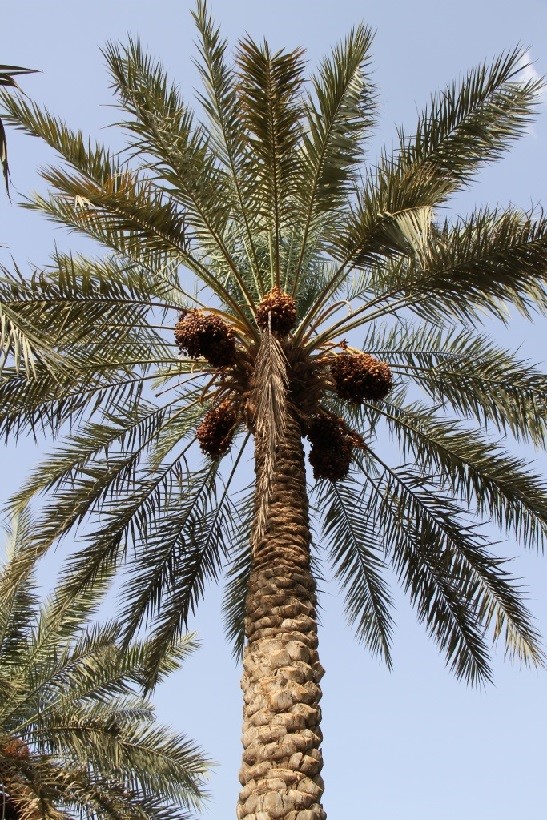Trees
Phoenix dactylifera Linn.
Phoenix dactylifera Linn.
Description :
A
tall evergreen tree attaining a height of 30 to 35 m. The stem is covered with
the stumps of old leaves from the bottom to the top except for the space
occupied by existing whorls of large frond like grey leaves. Leaflets make an
acute angle with the rachis and are up to 2.5 m long. Base of stem is
surrounded by suckers. Male flowers are white, in short compact pinnacles 15 to
22 cm long. It flowers between March and April. The fruit is full of
nourishment, sweet and tasty, up to 5 cm long. It has no known insect or fungi problems,
but the fruit must be covered with nets to save it from birds and squirrels. It
is reproduced from seed or suckers which are plentiful around the base of the
main stem. Its growth is slow especially when young. It takes about 10 years to
attain a height of 2 m. Interlocked grain, Sapwood is greyish white having high
density and hard but not durable strength.
Distribution :
The
tree has reportedly been introduced to the Subcontinent by Muslims from Middle
East countries. It has become naturalized in several southern districts of
Punjab and KP, and in parts of Sindh and Balochistan. The tree grows well in
an arid climate in saline soils but requires plenty of moisture. It can
withstand temperatures up to 45°C. The tree grows naturally in its habitat and
spreads by suckers and seed distributed by birds.
Uses :
Several
edible varieties have been developed which are managed as garden trees or in
agroforestry systems. Also used in rafters, support posts, and fruit.



